Last updated: 01 June 2016, 16:53
The History of No.255 Squadron in
World War One
|
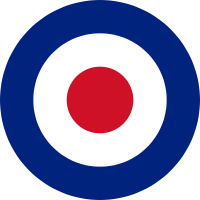 |
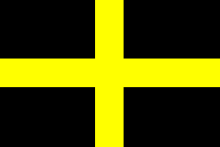 |
Fe’i ganed yng Nghymru – Born in Wales |
 |
 |
The flags shown alongside the RAF Roundels are "Baner Dewi Sant" (The Flag of Saint David, Patron Saint of Wales) and "Y Ddraig Goch" (The Red Dragon). Neither were official Welsh flags at the time of WWI, but both were in common use. Baner Dewi Sant became official in 1921 and Y Ddraig Goch in 1959. |
Place of formation of No.255 Squadron
No.255 Squadron was formed at Pembroke in West Wales.
[1] The reference to Pembroke means RAF Pembroke, not to be confused with RAF Pembroke Dock which did not exist at the time. RAF Pembroke closed after the First World War but the site was subsequently re-opened as RAF Carew Cheriton. Both RAF Pembroke and RAF Carew Cheriton were unofficially known as Milton – at some risk of confusion with RAF Milton near Banbury, Oxfordshire, which was for many years the home of No.3 Maintenance Unit.
Squadron numbering at the time of formation of the RAF
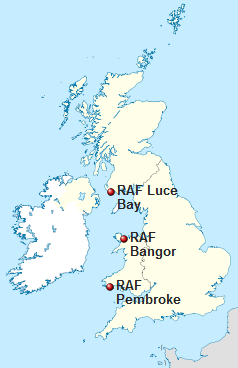
Some of the RAF airfields used by
DH6 aircraft conducting inshore
anti-submarine patrols in the Irish
Sea and its approaches.
[Map template - Wikipedia] |
|
When the Royal Air Force (RAF) was created on 1 April 1918, squadrons formerly part of the Royal Naval Air Service (RNAS) were distinguished from former units of the Royal Flying Corps (RFC) with the same number by having 200 added to their previous RNAS designations. Thus, for example, No.3 Squadron RFC became No.3 Squadron RAF, whilst No.3 (Naval) Squadron RNAS became No.203 Squadron RAF. [2] [3] [4]
Prior to the formation of the RAF, the RNAS had a large number of additional flying units that were smaller than whole squadrons, some stationed in the UK and others overseas. After being taken over by the RAF, some of these units were initially identified as numbered Flights. These Flights were subsequently grouped into new squadrons which were also numbered in the 200-series.
No.255 Squadron is an example of such a grouping of Flights, the contingent at Pembroke being formed from Flights 519 and 520. Elsewhere on the coastline of the Irish Sea and its approaches, Flights 521, 522 and 530 eventually became No.244 Squadron based at Bangor (also known as RAF Aber, an abbreviation of Abergwyngregyn) and Flights 523 and 524 eventually became No.258 Squadron based at Luce Bay, Scotland. [5]
Some of the flights that eventually became part of 244 and 258 Squadrons were originally detachments of 255 Squadron. However, there appears to be no record of any site other than Pembroke being used operationally by 255. |
Uncertainties regarding both the date of formation and just what was formed
Documents discovered in 2014 and 2015 at The National Archives (TNA) suggest that the formation of No.255 Squadron was considerably earlier than 25 July 1918, the date given in several well-respected reference books. Working backwards from that date and looking only at primary sources of historical data...
Within the Patrol Reports of No.14 Group (which, give or take some filing errors noted below, bring together records relating to airships, seaplanes and land-based aircraft throughout the Group) there exists a record of daily operational sorties from Pembroke by aircraft of No.255 Squadron. The series commences on 6 July 1918.[6] This simply could not be if the squadron had not been formed until 25 July.
On a purely administrative basis, the squadron must have existed on 8 May 1918. That date appears in the RNAS service record of Reginald Rhys Soar as the date when he was posted to the squadron.[7]
An Air Order issued by the Director of Air Organisation on 1 May 1918[8] makes specific reference to No.255 Squadron (Pembroke) as a unit destined to have 2 flights at Pembroke, 2 at Anglesey and 2 at Luce Bay, all due to be “installed” by June. The DAO was "top dog" in matters relating to squadron formations and disbandings. This is at present the earliest known reference to the existence of No.255 Squadron by DAO and so, for the time being, 1 May 1918 is taken to be the date of 255’s formation.
This plan encountered a problem. Local histories of North Wales suggest that the lightweight DH6 aircraft were found to be unsuitable for use at the Airship Station at
Llangefni on Anglesey
(Ynys Môn), on account of the ground there being too rough and not readily levelled at reasonable expense. Hence the construction of RAF Bangor ("Aber").
[9] In other respects, the proposals seem to have gone ahead although there is no known evidence of any
operational flying by 255 taking place from any site other than Pembroke before the next administrative change intervened in late July. Both
Llangefni and Luce Bay were at the time returning Patrol Reports for SSZ airships, but apparently not for heavier-than-air machines, suggesting that the Flights present there as detachments of No.255 Squadron were still in the process of equipping and training. Aber was not ready for operational use until mid-August, by which time Special Duty Flights 521 and 522 had – by a margin of several weeks – already become No.244 Squadron.
Research into this distinction between commencement of physical presence and operational readiness/activity has been complicated by the somewhat vague boundaries between No.14 Group and No.22 Group (“Coast of Scotland”, formed 1 July 1918 and including Luce Bay Airship Station). Some airship patrol reports from
Llangefni are filed with No.22 Group documentation, as if Anglesey was a Scottish island rather than a Welsh one.
[10] Conversely, a report entitled "Organisation of No.22 Group, RAF" dated 20 July 1918 notes “It has already been agreed that Luce Bay is included in No.14 Group for Operations”.
[11] Further confusion has in the past arisen because Patrol Reports for land-based aircraft flying out of RAF Luce Bay (258 Squadron) and RAF Macrihanish (272 Squadron) have for decades been mis-filed as part of the (then) non-existent No.25 Group.
[12]
On 25 July 1918, the two flights "already installed at Luce Bay" became No.258 Squadron and the two "already installed at Bangor" became No.244 Squadron.
[13] This shows that both were spin-offs from No.255 Squadron. The same Air Order states that “No.255 Squadron will consist of the two flights located at Pembroke”. This seems to have been mis-read by some as an indication of 255 being formed on 25 July, but the clear evidence of 255’s earlier existence found in the primary source documents cited above suggests that the Air Order of 25 July should be read as if it said "No.255 Squadron will
henceforth consist
only of the two flights
already located
and operational at Pembroke".
One shadow of doubt remains. Air Order 931, believed to relate to "Marine Operations over Home Waters" and probably dated sometime in the first half of July 1918, is missing from the bound volumes of Air Orders filed at The National Archives. Anybody finding a copy elsewhere is requested to alert 255 Squadron Association, quoting the TNA file reference, even if it transpires that the Order does not affect the squadron.
|
Aircraft
The squadron was equipped with Airco DH6 aircraft. These single-engine biplanes could carry either a 100 lb bomb or an Observer in addition to the Pilot, but not both. [14] This accounts for the imbalance in crew numbers evident in the Squadron Roll Call; the number of Pilots far exceeded the number of Observers. Prior to the formation of the RAF on 1 April 1918, the RNAS reportedly used Sopwith 1½ Strutter aircraft based at Pembroke, [15] but there is no known evidence of these remaining at the airfield for subsequent operational use by No.255 Squadron. |
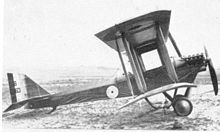 |
An Airco DH6 similar to those
flown by the squadron in 1918. |
Strategic purpose of operations at Pembroke
The sole function of No.255 Squadron during WWI was anti-submarine warfare. For those at Pembroke, that initially meant within a zone defined as "10m NW of Fishguard to 10m S of Caldey Island". Within days this was extended to 15 miles South of Caldey Island.
[16] Airborne anti-submarine warfare in the Bristol Channel, St.George’s Channel and southern Irish Sea was conducted by three distinct classes of flying machine. Patrol reports archived at TNA in AIR1/485 indicate that long duration patrols and convoy escort duties were carried out by Class SSZ Airships. The Airship Station at Pembroke maintained a Detachment at Wexford, Ireland, so as to extend No.14 Group’s reconnaissance capability further into the Western Approaches. The airships were fitted with Wireless Telegraphy apparatus (known as "W/T", meaning radio communication using morse code), enabling rapid dissemination of information concerning the whereabouts of any U-boats sighted.
Shorter range patrols were conducted both by Short Type 184 and, on rare occasions, Hamble Baby seaplanes. Like the airships, Short Type 184s were fitted with Wireless Telegraphy apparatus, giving them a distinct advantage over smaller aircraft in terms of rapid reporting of U-boat sightings. The nearest seaplane base to RAF Pembroke was at Fishguard (No.245 Squadron).
Inshore patrols were conducted by the DH6 aeroplanes of No.255 Squadron. The unit appears to have been very much the junior partner in this tripartite reconnaissance/attack arrangement, on account of the DH6’s shorter range and lack of radio communication facilities.
That said, the overall strategy was not just one of hunt-and-kill. A WWI submarine could barely manage 5 knots submerged. By preventing the submarines from cruising on the surface in daylight, the RAF enabled merchant vessels to out-run their predators. The mere presence of spotter aircraft was sufficient to cause the enemy to dive, leading to the expression "scarecrow patrols".
Officers Commanding
The Officer Commanding "A" and "B" Flights was Hon. Captain Reginald Rhys Soar, DSC. In line with Welsh norms (his mother was Welsh), he was known by his second forename, Rhys, and always signed RAF paperwork as "R. Rhys Soar", never as Reginald.
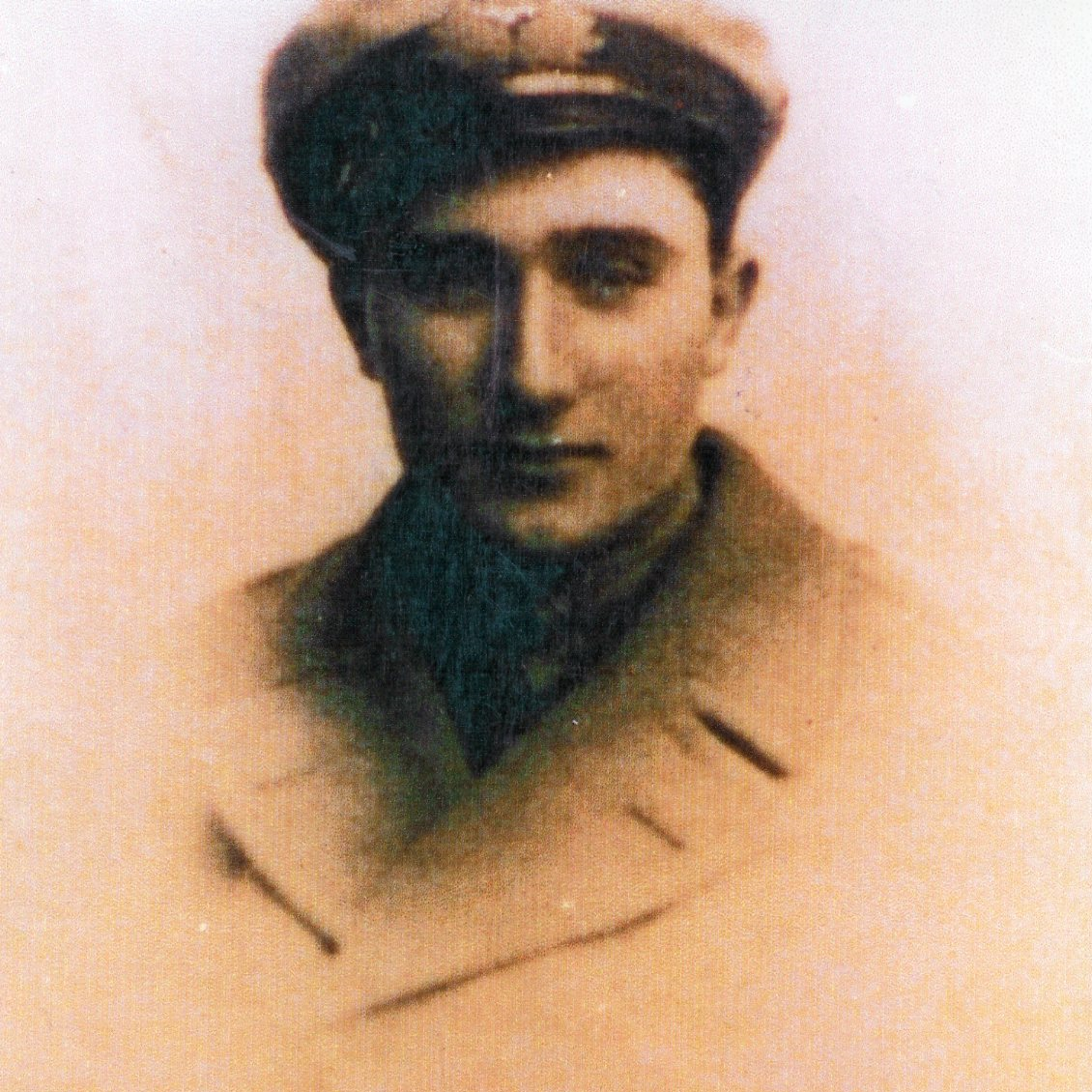 |
Rhys Soar, photographed circa 1917 in RNAS uniform.
Photo courtesy of the Soar family archive. |
Rhys Soar chose to retire to Pembrokeshire and is buried in Martletwy churchyard, just a few miles north-west of the site of RAF Pembroke.
The squadron’s senior administrator was Major Robert Gordon Gould, MC. Wounded whilst serving in No.10 Squadron RFC, Gould was posted to "14 Group for 255 Squadron" on 10 May 1918. He is only named once in the squadron’s sortie records, possibly indicating an ongoing disability preventing this keen pilot from participating more regularly in front-line service. Three years previously he had funded his own tuition as a pilot, qualifying for his Royal Aero Club Aviator’s Certificate on 24 April 1915. Once on active service with the RFC, he claimed the cost of his tuition against expenses!
[17]
The Officer Commanding the whole of No.14 Group (which included airships, seaplanes and land-based aircraft) was Robert Cholerton Hayes. His rank "WSE" (whilst so employed) was Lt.Col., his role being described as "Group Commander".
[18]
A navy Dirigible Officer by background, in January 1919 Hayes was awarded the OBE in recognition of his wartime work in respect of the military applications of lighter-than-air craft at both RNAS Kingsnorth and Pembroke.
[19]
[20]
The modern rank structure of the RAF was not introduced until after the squadron had been disbanded in 1919. An overview of AIR1/485 and AIR1/486 suggests that these three officers performed roles equivalent in modern terms to Squadron Leader, Wing Commander and Group Captain respectively.
Moving further up the chain of command, one encounters Major-General J.F.A. Higgins, DSO, in charge of what was originally No.3 Area but after barely ten days as such was re-named Midland Area.
[21] This renaming accounts for the several isolated references to "Midland" in the Service Records of squadron members identified in the table below.
The major contraction in the size and reach of 255 that followed from the DAO’s order of 25 July 1918 must have come as a huge disappointment to those who had spent the best part of three months setting it all up – Gould and Soar especially. Local history suggests that Rhys Soar had clocked up a huge number of flying hours moving between Pembroke,
Llangefni and Luce Bay on administrative duties. For this purpose, he reportedly used Sopwith F1 Camel D9542 as his personal transport.
[22]
Aircrew, etc.
The following table lists all officers known to have served with (or to have been in command of) No.255 Squadron at any time between 25 July 1918 (the date of creation of No.244 and No.258 Squadrons, carved out of 255) and the Armistice on 11 November 1918. Rank shown is that held on Armistice Day. Leonard Andrews’ commission as a 2nd Lieutenant was confirmed and Geoffrey Chetwynd-Stapylton was promoted to Acting Captain before the squadron was disbanded. There is no record of any NCO serving as aircrew.
| Surname | Forenames | Date of Birth | Rank | Role | Domicile | Service record |
| Andrews | Leonard Christopher | 15 May 1899 | Temp 2/Lt. | Observer | Britain | AIR76/8/184 |
| Arcand | Louis Georges | 31 Aug 1897 | Lieutenant | Pilot | Canada | AIR76/10/4 |
| Birkbeck | Paul William | 03 May 1899 | Lieutenant | Pilot | Britain | AIR76/40/6 |
| Chaffe | Redvers Sydney S. | * 06 Apr 1900 | 2nd Lieut. | Pilot | Canada | AIR76/81/3 |
| Chetwynd-Stapylton | Geoffrey | 27 Dec 1893 | Lieutenant | Admin | Britain | AIR76/480/178 |
| Garnett | Walter Hugh S. | 26 Jun 1891 | Acting Major | Staff Officer | Britain | AIR76/177/67 |
| Gillingham | Hubert Henry | 14 Nov 1894 | Lieutenant | Pilot | Britain | AIR76/183/87 |
| Godden | William John G. | 28 May 1899 | 2nd Lieut. | Observer | Britain | AIR76/185/90 |
| Gould | Robert Gordon | 26 Feb 1885 | Acting Major | Pilot | Britain | AIR76/189/125 |
| Hamilton | Ralph Nigel | 07 Nov 1895 | Hon. Lieut. | Pilot | Britain | AIR76/206/33 |
| Hayes | Robert Cholerton | 30 Nov 1884 | Acting Lt.Col | Dir. Officer | Britain | ADM273/1/57 |
| Hunter | Richard Charles A. | * Dec.Qr.1891 | 2nd Lieut. | Pilot | Britain | AIR76/245/123 |
| Leguen-de-Lacroix | Aleth Thomas S. | 27 May 1894 | Lieutenant | Pilot | Britain | WO372/11/217664 |
| Montgomery-Moore | Robert John | 24 Mar 1896 | Lieutenant | Admin | Britain | WO339/18127 |
| Nicholson | Leyster | 09 Oct 1892 | Lieutenant | Pilot | Britain | AIR76/373/40 |
| Peebles | Arthur John D. | 12 Jun 1898 | Lieutenant | Pilot | Britain | AIR76/396/168 |
| Soar | Reginald Rhys | 24 Aug 1893 | Hon. Capt. | Pilot | Britain | ADM273/7/9 |
| Stallibrass | Trevor Lawrie W. | 20 Jun 1888 | Lieutenant | Pilot | Britain | AIR76/479/131 |
| Tamplin | Harold Llewelyn | 03 Jan 1899 | Lieutenant | Pilot | Canada | AIR76/494/144 |
NOTES to accompany the above:
* Data derived from standard genealogical sources, missing from known military records.
Dir. Officer = Dirigible Officer, qualified to operate an Airship but not fixed-wing aircraft.
The Lieutenant Montgomery-Moore listed here is not the same person as the author of the book "That’s My Bloody Plane!", but may have been a relative.
Harold TAMPLIN’s middle forename is consistently spelled as above in both British and Canadian records, except on his birth registration. Reference to the original document (not merely the General Register Office indexes) shows that the original birth registration used the more conventional spelling Llewellyn.
As at 2016, some RAF service records from WWI have not been declassified, in most cases because the person remained in the military after the war. Such records are normally declassified 90 years after service in the armed forces ceased. However, pre-1918 RNAS, RFC or Army records in respect of the same individuals have not been similarly withheld. These substitute sources are listed in the table where appropriate. Most entries in the column "Service record" are available online via The National Archives website.
255 Squadron Association gratefully acknowledges the help given by the Royal Canadian Air Force archives and the staff of the London Borough of Wandsworth in the preparation of this table. Further biographical details for each officer appear on our People page. |
Signalling codes and Squared Charts
A short code was used to report latitude and longitude of a target or other location, comprising a 5-character group of two numbers followed by three block capital letters. Example: 67ABC. The numerical component represents a grid square measuring 25 Nautical Miles along each side. This refers to the old definition of the Nautical Mile, also known as a "Sea Mile". The fixing of the Nautical Mile as a distance of 1,852.00 metres did not happen until 1929. At the time of the First World War, a Nautical Mile was defined as being the distance at sea level which, if viewed from the centre of the earth, would subtend an angle of one sixtieth of one degree of arc. Given that the Earth is not a perfect sphere, this means that the length of a pre-1929 Nautical Mile varies from place to place, being largest at the equator and smallest at the poles. [23] Such a variable unit at first makes no sense, but it was done because it hugely simplifies astronavigation.
The algorithm for decoding the numerical component of the code is mathematically complex, because repetition of any number is excluded. Thus squares 00, 11, 22, 33 and so on up to 99 simply do not exist, in effect creating a system that is non-linear. Additional complexity arises because nine (the mathematical "base" or "radix" in this quasi-nonal system) is not a factor of sixty, the number of Nautical Miles in one degree of latitude. Nor is 5 a factor of 9, five being the number of sub-squares forming one side of the master square. In practice the decode was not calculated, but physically plotted on a chart using a crib, examples of which survive in The National Archives. [24] |
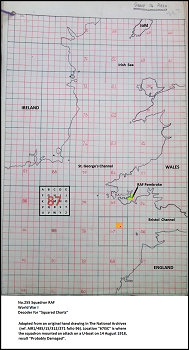 |
|
Each letter in the 5-character group represents successive subdivision of the main square into 25 smaller squares using a 5×5 grid labelled A through Z omitting X. With three such subdivisions, the resolution of the coded location statement is good enough to pinpoint any position within No.14 Group’s area to an accuracy of one fifth of a Nautical Mile, which is approximately 370 metres.
At the level of the second subdivision, the minor squares had sides of 1 Nautical Mile. Possibly to avoid confusion between Nautical Miles and Statute Miles, these were known as "2,000 Yard Squares" rather than "One Mile Squares".
[25]
If taken literally as 2,000 yards, the discrepancy introduced by this nomenclature is slightly over 1%. The exact magnitude of the error depends (under the old definition of the Nautical Mile) on the Latitude of the observer.
This whole mapping system, called "Squared Charts", created a highly simplified method for exchanging position information either in writing, by Semaphore, or using Morse Code sent by wireless or signal lamp. Use of the Squared Charts system for reporting positions is almost universal within the WWI records of the squadron.
First reported sighting of a U-boat
On 10 July 1918 a patrol by an aircraft of No.255 Squadron reported sighting a hostile periscope at encoded location 64LYK. The following day a target in the same area was attacked by Short seaplanes from another squadron.
[26]
First reported engagement with a U-boat
No.255 Squadron’s first claimed strike against the enemy occurred on 14 August 1918, when Lieutenant PEEBLES (Arthur John Douglas Peebles, born 12 June 1898) piloting DH6 serial C9439, reported finding a submarine at periscope depth at encoded position 67ISC. He attacked the target at 09:35 with a 100 lb bomb. This resulted in air bubbles and an oil slick. Having no radio and in the absence of surface vessels that he might have redirected to the scene using visual signals, Lieutenant Peebles landed at a Look-Out Station at position 65OGV, but he found it "uninhabited". He therefore flew on to RAF Pembroke. At 12:20 another attack was mounted against the same target by Lieutenant Peebles and Captain Soar and further oil was brought to the surface.
[27]
Admiralty assessment at the time classified the result of the strike as "U-boat possibly damaged", giving the decoded position as 51°17' N, 05°04' W.
[28]
No U-boat is unaccounted for in this area, such that the target might have been sunk and never identified. Analysis of the incident by independent researchers associated with the website U-boat.net, conducted in May 2014, shows that the following submarines of the
Kaiserliche Marine (Imperial German Navy) were on patrol in the general area: U52, U94, U96, UB86 and UB92. Further research in surviving KTBs (KTB = Kriegstagebuch, in translation "War Diary") is needed to determine which, if any, of these was attacked.
Errors and omissions in WWI records
Numerous errors, omissions and potentially confusing instances of now-obsolete terminology exist in The National Archives records of No.14 Group. These are noted here for the benefit of other researchers studying the same source:
Generally:
- There is endless confusion between Knots (a measure of speed) and Nautical Miles (a measure of distance).
- Nautical Miles are inadequately distinguished from Statute Miles.
- Reference to an airship is often abbreviated to "ship". This gave rise to some apparently nonsensical reports of ships cruising at altitudes of several hundred feet.
- Bearings are sometimes given using the antiquated system of Compass Points.
- On occasions, no distinction is made between True North and Magnetic North. When the difference is mentioned, the traditional UK terminology "Magnetic Variation" is used in line with the nomenclature used on Admiralty Charts.[29] Note that modern US terminology differs. Magnetic Variation in the squadron’s patrol area was considerable, Magnetic North in 1918 being 17°45' W of True North.[30]
- The initials RNAS can stand for Royal Naval Air Service (abolished 1 April 1918) or Royal Naval Airship Station. Given that the airships themselves remained in Admiralty ownership after 1 April 1918 and were not transferred to the Air Ministry during the course of the war, it can be argued that use of the term Royal Naval Airship Station validly persisted after the formation of the RAF.[31]
- Documents in the relevant files were not accurately placed in date order before Folio numbers were backstamped onto them.
- Air Order 931 is missing from TNA Box AIR1/2434. AO984 suggests that it relates to "Marine Operations in Home Waters". Copies may exist elsewhere in the files, but AO931 has not yet been found.
With specific reference to No.255 Squadron:
- The squadron was mis-described as "No.225" on the Daily Patrol Report for 7 July 1918.
- The names of individual pilots and observers do not routinely appear in the squadron’s sortie records prior to 9 August 1918. Thereafter, only current rank and surname are noted, not forenames or initials.
Disbanding
Officially the date of disbanding was 14 January 1919, but it seems that flying activity ceased considerably earlier. The records of No.14 Group include a Nil return of Patrols for the whole of the week ending 30 November 1918 and the record itself ceases at that date.
[32]
The order to disband is to be found in Air Order 1206, one of the principal documents relating to the contraction of the RAF after the war.
[33] The fact that disbanding went ahead on the due date is later confirmed in Daily Routine Orders.
[34]
Citations and Footnotes
Click on the ^ symbol to return to the text you were reading.
|
1. ^ |
Air Order A.O./855, filed in AIR1/2434 Part 3. Original document – requires TNA Readers Ticket to view. |
|
2. ^ |
Jefford C.G. (2001). RAF Squadrons (2nd Edition). Shrewsbury UK : Airlife, p.12. ISBN 1-84037-141-2. |
|
3. ^ |
This order was issued separately to RNAS and RFC units, RNAS first. For the RNAS version, see Air Order A.O./800 in TNA : AIR1/2434 Part 2. Original document – requires TNA Readers Ticket to view. |
|
4. ^ |
This order was issued separately to RNAS and RFC units, RFC second. For the RFC version, see Air Order A.O./820 in TNA : AIR1/2434 Part 2. Original document – requires TNA Readers Ticket to view. |
|
5. ^ |
Delve, K. (1994). The Source Book of the RAF. Shrewsbury UK : Airlife, p.157. ISBN 9781853104510. |
|
6. ^ |
TNA : AIR1/485/15/312/269 folio 156. Original document – requires TNA Readers Ticket to view. |
|
7. ^ |
TNA : ADM273/7/9. Available online. |
|
8. ^ |
Air Order A.O./855 Supra. |
|
9. ^ |
Pratt, D. and Grant, M. (1998). Wings Across the Border : History of Aviation in NE Wales and the Northern Marches. Vol.1. Wrexham UK : Bridge Books. pp.38–39, 44–45. ISBN 9781872424750. Note that this work, at p.77, incorrectly attributes aircraft and aircrew losses at Llangefni in August 1918 to No.255 Squadron rather than No.244 Squadron. See CWGC website. |
|
10. ^ |
TNA : AIR1/490/15/312/282 folios 41–52. Original document – requires TNA Readers Ticket to view. |
|
11. ^ |
TNA : AIR1/671/17/134/4 (unpaginated). Original document – requires TNA Readers Ticket to view. |
|
12. ^ |
TNA : AIR1/421/15/247/1. Original document – requires TNA Readers Ticket to view. |
|
13. ^ |
Air Order A.O./951. Filed in TNA : AIR1/2434 Part 3. Original document – requires TNA Readers Ticket to view. |
|
14. ^ |
Technical Specification and load calculations here. The following published works come to the same conclusion: [1] Hayes, K.E. (1988). A History of the Royal Air Force and United States Naval Air Service in Ireland, 1913–1923. Dublin IRL : Irish Air Letter and the author jointly, p.25–26. ISBN 0-9508231-1-2. [2] Pratt, D. and Grant, M. (1998), Supra, p.45. |
|
15. ^ |
Phillips, A. (2010). Defending Wales. Stroud UK : Amberley Publishing, p.55. |
|
16. ^ |
TNA : AIR1/485/15/312/269 folio 163. Original document – requires TNA Readers Ticket to view. |
|
17. ^ |
TNA : WO339/65814. Original document – requires TNA Readers Ticket to view. |
|
18. ^ |
TNA : AIR76/217/136. Available online from TNA website as an individual document. |
|
19. ^ |
Bilbé, T. (2013). Kingsnorth Airship Station, Stroud UK : The History Press, p.123. ISBN 9780752491530. |
|
20. ^ |
The Edinburgh Gazette, issue 13378, p.73. |
|
21. ^ |
Delve, K. (1994). Supra, p.95. |
|
22. ^ |
Pratt, D, and Grant, M. (1998). Supra. |
|
23. ^ |
Wilkes, K. (1977). Ocean Yacht Navigator (2nd edition with corrections), Lymington UK : Nautical Publishing, p.15. ISBN 0-245-52968-3. |
|
24. ^ |
Example: TNA : AIR1/486/15/312/271 folio 96. Original document – requires TNA Readers Ticket to view. |
|
25. ^ |
Sample chart: Smith, G., Tribute to British Shipbuilding and Repair Industries 1914–18, Part 3 of 3, Chart 2 (Portsmouth). See reference in the top margin to “2000 yard squares”. |
|
26. ^ |
TNA : AIR1/485/15/312/269 folios 169 and 171. Original document – requires TNA Readers Ticket to view. |
|
27. ^ |
TNA : AIR1/485/15/312/269 folio 100 and TNA : AIR1/419/15/245/1 folio 518. Original documents; both require TNA Readers Ticket to view. |
|
28. ^ |
TNA : ADM239/26 tab 1292F folio 167. Original document – requires TNA Readers Ticket to view. |
|
29. ^ |
Langley-Price P. and Ouvry P. (1985), Competent Crew, London UK : Adlard Coles, p.83–84. ISBN 0-229-11736-8. |
|
30. ^ |
Admiralty Chart No.1179 (England, West Coast, Bristol Channel), 1918 Edition. Available as reserve stock at the Caird Library, National Maritime Museum, Greenwich. Requires Caird Library Readers Ticket both to pre-order and to view. |
|
31. ^ |
Turpin, B.J. Coastal Patrol: Royal Naval Airship Operations during the Great War 1914-1918 due to be published 10.Oct.2016. Pers. Corr. with author. |
|
32. ^ |
TNA : AIR1/419/15/245/1 folio 785. Original document – requires TNA Readers Ticket to view. |
|
33. ^ |
Director of Air Organisation order A.O./1206, a copy of which is to be found at TNA : AIR1/616/16/15/329, Part B folio 60, appended Table C, page 8. Original document – requires TNA Readers Ticket to view. |
|
34. ^ |
Daily Routine Orders (Part IV) by D. Air O., No.47, to be found at TNA : AIR1/2086/207/6/3 (unpaginated file approximately in reverse date order). Original document – requires TNA Readers Ticket to view. |
Copyright © 2014–2025. All rights reserved except where otherwise stated.







